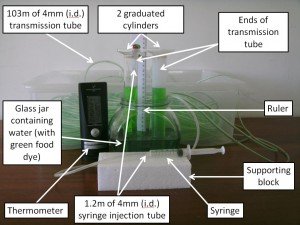* Corresponding author. E-mail:
 A previously-overlooked mechanism for energy transmission throughout the atmosphere is presented and characterised. This mechanism, which we have named pervection, involves the transmission of mechanical energy through a mass – in this case, the atmosphere. It is distinct from convection in that it does not require mass transport. It is also distinct from conduction in that conduction involves the transmission of thermal energy, not mechanical energy. The current atmospheric models assume that energy transmission in the atmosphere is dominated by radiation and convection, and have until now neglected pervection.
A previously-overlooked mechanism for energy transmission throughout the atmosphere is presented and characterised. This mechanism, which we have named pervection, involves the transmission of mechanical energy through a mass – in this case, the atmosphere. It is distinct from convection in that it does not require mass transport. It is also distinct from conduction in that conduction involves the transmission of thermal energy, not mechanical energy. The current atmospheric models assume that energy transmission in the atmosphere is dominated by radiation and convection, and have until now neglected pervection.
Experiments were carried out to measure the rate of energy transmission by pervection in air. It was found that pervection is rapid enough (39.4 ± 0.9 m s-1) to ensure the troposphere, tropopause and stratosphere remain in thermodynamic equilibrium. This contradicts a fundamental assumption of the current atmospheric models which assume the atmosphere is only in local thermodynamic equilibrium.

This work is licensed under a Creative Commons Attribution-ShareAlike 4.0 International License.
![]() Download article – Version 0.1
Download article – Version 0.1
Supplementary information available through the Figshare website at http://dx.doi.org/10.6084/m9.figshare.971041

